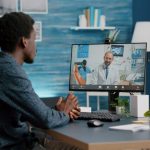
Preteens who spend much of their free time watching online videos or playing video games may have a heightened risk of developing obsessive compulsive disorder (OCD), a new study suggests. Researchers found that among 9,200 9- and 10-year-olds they assessed, the odds of developing OCD inched up with every daily hour kids devoted to online videos (such as on YouTube) or video gaming. That doesn’t mean kids are perfectly fine until they start browsing the video website. Experts said it’s possible that those on a trajectory toward OCD start to compulsively watch videos or become “addicted” to gaming. “It’s hard to tease apart the chicken-and-egg question,” said lead researcher Dr. Jason Nagata, an assistant professor of pediatrics at the University of California, San Francisco. In fact, he added, it’s likely there’s a “bi-directional relationship.” That is, compulsive kids may be drawn to play video games again and again, or watch online videos, where algorithms that feed them a continuous supply of additional videos can pull them down a rabbit hole. All of that, in turn, may worsen their compulsiveness. The bottom line, Nagata said, is that parents would be wise — for a number of reasons — to keep an eye on their kids’ screen time. OCD is a chronic disorder in which people have uncontrollable, recurring thoughts that spur behaviors they need to repeat… read on > read on >





































